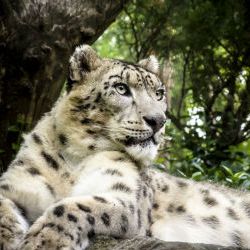Snow Leopard Census To Take Place Over The Next Five Years

Due to their high-altitude habitat in the bitterly cold Himalayas, snow leopards are one of the most difficult apex predators to study. Despite many decades of research, no one is quite sure how many of these elusive big cats exist. There are 12 countries in Asia that the snow leopard calls its home, and they have all got together to conduct a five-year census of the species through the use of camera traps and radio collars as well as hair and scat identification.
Downgraded conservation status by IUCN
It was decided to conduct the census following last year’s controversial decision by the IUCN to remove the snow leopard from its endangered species list after nearly half a century. Snow leopards have now been reclassified as a vulnerable species which suggests their risk of extinction is not as great as what experts previously believed. The change was based on an estimated snow leopard population of 8000 across Asia. Experts complain there is no way to tell how many snow leopards exist and every estimate so far has simply been a guess.
No unified protection
Conservationists worry that there is no unified protection for the species across the countries it calls home. They are also concerned about the long-term viability of snow leopards because of human encroachment, climate change and poaching. Removing snow leopards from the endangered species list produces the false impression that the species is safe. Getting results from the snow leopards is not an easy task because the big cats have evolved specifically for their habitats in the cold heights.
Specifically evolved for high altitude
Snow leopards have the thickest fur of all the big cats as well as a thick tail that they use to wrap around themselves to remain warm. They also have broad facial bones and a large nasal cavity enabling them to breathe in the extremely cold air and warm it up. When you add the fact that snow leopards have a high concentration of red blood cells to maximise the uptake of oxygen, it is no surprise that the species does not tire easily whilst climbing mountains and has no problems at heights exceeding 18,000 feet. This makes the snow leopard extremely hard to track even for the fittest of researchers.
Predictable behaviour
One advantage conservationists have is that the snow leopard is a fairly predictable animal, frequenting the same territory and spraying it to mark it out. This means that trackers can install camera traps which can be used to identify individual cats using their spots. It is estimated that it will take about five years to complete the census. Experts says that human encroachment and climate change have produces areas in the snow leopard’s habitat where the population is thinly dispersed. This creates islands that prevent movement and bottleneck diversity. Last year three subspecies were discovered suggesting fractured groups.



